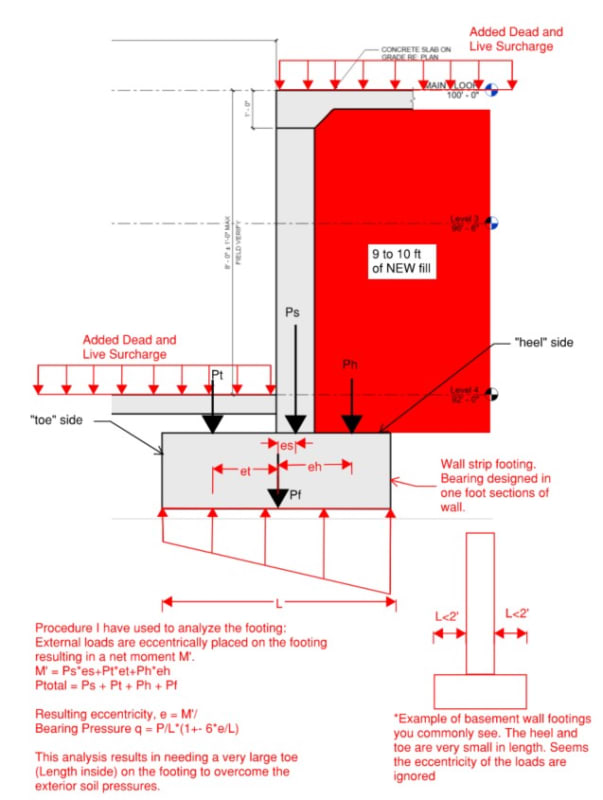NRKB17
Structural
- Jan 27, 2021
- 6
I have a question for you all pertaining to the behavior of the bearing pressure of basement walls that are considered pinned at the top and bottom. Basement walls that I have seen are typically detailed to be supported by a strip footing that extends equally in each direction of the wall to achieve the proper bearing capacity. This creates a concentric load on the footing from the wall. Where I am getting confused is how the soil on the exterior part of the footing is accounted for. To me it seems that there should be a large point load from the soil and possible surcharge on the exterior part of the footing and very little load on the interior part of the footing which is only likely to be a thin slab. To me the footing would then need to be analyzed for the moment that is created with the exterior footing load acting towards the edge of the footing. This creating issues for me though because it is requiring that the footing be extended much further towards the interior to offset this moment. Does any one have any references they can point to for this scenario or offer any advice?







